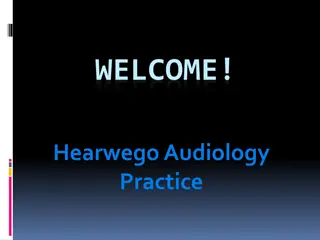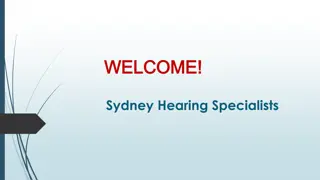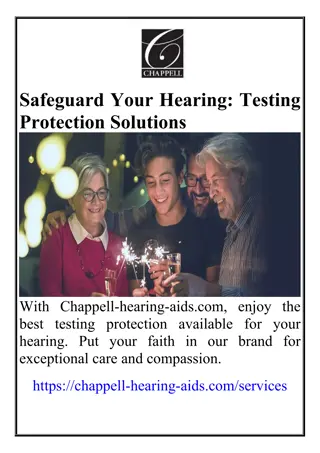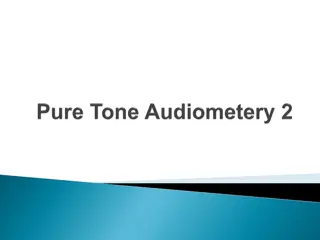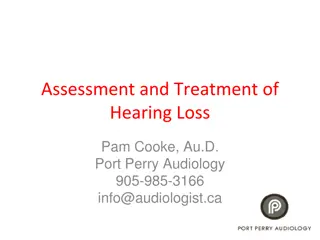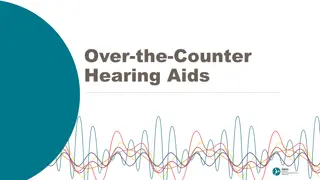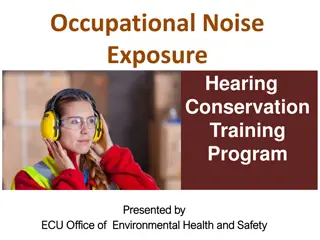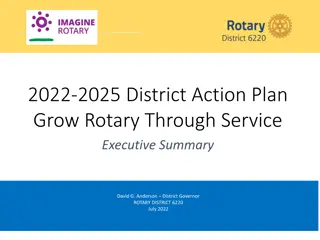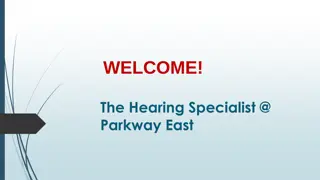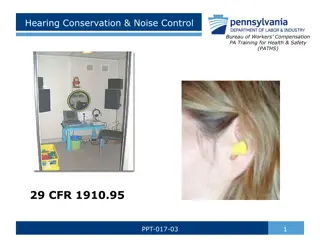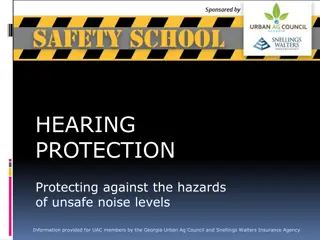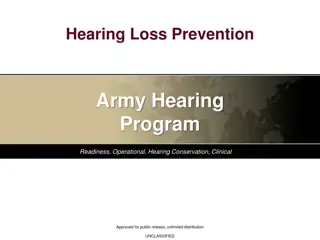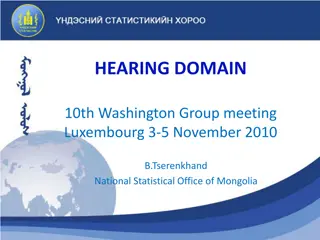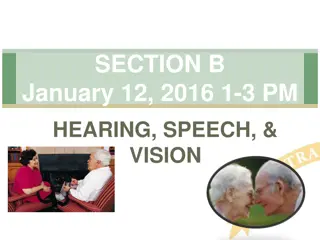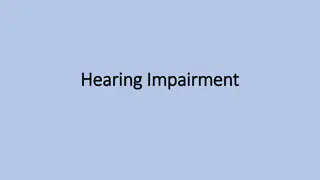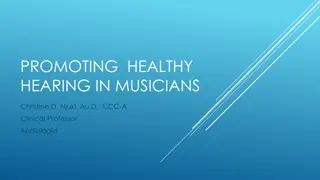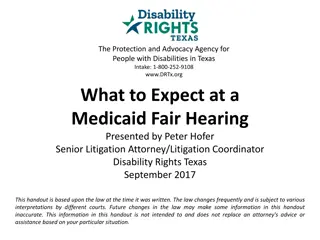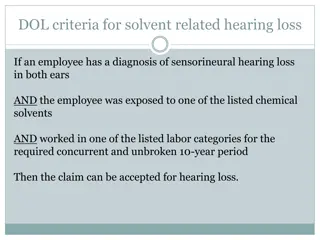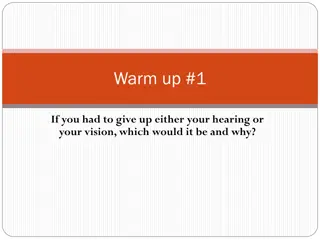City of Reading Public Hearing for 2025 Annual Action Plan
The City of Reading will hold a public hearing on May 14, 2024, at 5:00 p.m. at Reading City Hall to discuss the FFY 2025 Annual Action Plan. The plan outlines actions to meet Consolidated Plan goals and details the budget for the use of federal funds, including Community Development Block Grant (CDBG) funding. Funding specifics, eligibility criteria, and income limits are provided for low- to moderate-income individuals. The public hearing agenda includes discussions on CDBG, HOME, and ESG funding, past performance, the funding application process, planning timelines, community needs, and opportunities for public participation.
Download Presentation

Please find below an Image/Link to download the presentation.
The content on the website is provided AS IS for your information and personal use only. It may not be sold, licensed, or shared on other websites without obtaining consent from the author.If you encounter any issues during the download, it is possible that the publisher has removed the file from their server.
You are allowed to download the files provided on this website for personal or commercial use, subject to the condition that they are used lawfully. All files are the property of their respective owners.
The content on the website is provided AS IS for your information and personal use only. It may not be sold, licensed, or shared on other websites without obtaining consent from the author.
E N D
Presentation Transcript
CITY OF READING PUBLIC HEARING MAY 14, 2024 5:00 P.M. READING CITY HALL FFY 2025 ANNUAL ACTION PLAN
2025 ANNUAL ACTION PLAN Describes actions to be undertaken to meet Consolidated Plan goals Details budget for use of federal funds
PUBLIC HEARING AGENDA CDBG, HOME, and ESG Funding Past Performance Funding Application Process 2025 Annual Action Plan Planning Timeline Additional Information on the City s Website Community Needs Additional Opportunities to Participate Follow-Up Questions or Comments
COMMUNITY DEVELOPMENT BLOCK GRANT (CDBG) FUNDING Federal funding administered by the U.S. Department of Housing and Urban Development Authorized under Title I of the Housing and Community Development Act of 1974, as amended Cities with more than 50,000 people and counties with more than 200,000 people automatically receive this funding Anticipated funding: $2,200,000 (estimated)
COMMUNITY DEVELOPMENT BLOCK GRANT (CDBG) FUNDING Up to 15% of funds can be used for public services Every project must meet one of three national objectives Benefit low- to moderate-income persons (at least 70% of funds)* Eliminate slums and blight Meet urgent needs * Family income less than 80% of the area median based on Section 8 income limits (family includes all people living in the same household related by birth, marriage, or adoption)
COMMUNITY DEVELOPMENT BLOCK GRANT (CDBG) FUNDING Family Size Extremely Low Income (<30%) $20,050 Very Low Income (<50%) $33,400 Low Income (<80%) $53,400 1 Person 2 People $22,900 $38,150 $61,000 3 People $25,750 $42,900 $68,650 4 People $30,000 $47,650 $76,250 5 People $35,140 $51,500 $82,350 6 People $40,280 $55,300 $88,450 7 People $45,420 $59,100 $94,550 8 People $50,560 $62,900 $100,650 FY 2023 Income Limits Summary
COMMUNITY DEVELOPMENT BLOCK GRANT (CDBG) FUNDING National Objectives Low-Moderate Income Slums/Blight Urgent Need Area Benefit Area Basis Limited Clientele Spot Basis Housing Jobs
COMMUNITY DEVELOPMENT BLOCK GRANT (CDBG) FUNDING Low-Moderate Income (LMI): Area Benefit At least 51% of people in service area are LMI Factors to determine the service area: The nature of the activity The location of the activity Access to the facility The availability of comparable activities
COMMUNITY DEVELOPMENT BLOCK GRANT (CDBG) FUNDING Low-Moderate Income (LMI): Limited Clientele Presumed to be LMI: Abused children Battered spouses People aged 65 and older People experiencing homelessness Adults unable to read or write Migrant farm workers Severely disabled adults People living with AIDS Documented family income <80% AMI Income eligibility required to participate Nature and location of service predominantly used by LMI people Activity removes material or architectural barriers to accessibility of elderly people or severely disabled adults Microenterprise assistance
COMMUNITY DEVELOPMENT BLOCK GRANT (CDBG) FUNDING Low-Moderate Income (LMI): Housing Providing or improving permanent residential structures, which upon completion, will be occupied by LMI households
COMMUNITY DEVELOPMENT BLOCK GRANT (CDBG) FUNDING Low-Moderate Income (LMI): Job Creation or Retention The activity must create or retain a job for mostly LMI people
COMMUNITY DEVELOPMENT BLOCK GRANT (CDBG) FUNDING Removal of Slums or Blight Change in physical environment Area basis or spot basis Definition of slum and blight per state law (PL 991) or local law
COMMUNITY DEVELOPMENT BLOCK GRANT (CDBG) FUNDING Urgent Need Rarely used Activities that alleviate emergency conditions
COMMUNITY DEVELOPMENT BLOCK GRANT (CDBG) FUNDING Examples of Eligible Projects Housing rehabilitation Code enforcement Acquisition or disposal of real property Demolition Blight removal/site clearance Infrastructure and public facility improvements Economic development Social services
COMMUNITY DEVELOPMENT BLOCK GRANT (CDBG) FUNDING Examples of Projects that are NOT Eligible Political activities Construction of housing by a unit of local government Operation and maintenance of public facilities General government expenses including construction of general government buildings Purchase of equipment Direct income payments
HOME INVESTMENT PARTNERSHIPS PROGRAM (HOME) FUNDING Federal funding administered by the U.S. Department of Housing and Urban Development Anticipated funding: $800,000 (estimated) Must benefit households with income below 80% of the area median 15% set-aside for Community Housing Development Organizations (CHDOs) Eligible projects include: New affordable housing development Rehabilitation of affordable housing Housing counseling Tenant-based rental assistance First-time homebuyer assistance
EMERGENCY SOLUTIONS GRANT (ESG) FUNDING Federal funding administered by the U.S. Department of Housing and Urban Development Assists people to quickly regain stability in permanent housing after experiencing a housing crisis and/or homelessness Anticipated funding: $210,000 (estimated) Eligible projects include: Street outreach Emergency shelter Rapid re-housing Homelessness prevention HMIS (Homeless Management Information System)
PAST PERFORMANCE Information about the city s past performance is available at https://www.readingpa.gov/housing-and-community- development Annual Action Plans CAPERs (annual reports) Annual Community Assessments Copies can also be obtained by contacting the Community Development office
FUNDING APPLICATION PROCESS Applications available on City website Due date: June 30, 2024 CDBG assistance/questions: Neil Nemeth (610) 655-6423 HOME or ESG assistance/questions: Patricia Vasquez (610) 655-6211
PLANNING TIMELINE June 30, 2024: Applications for funding due July-August: Applications reviewed for eligibility and fundability September 2024: Mayor sends documents to City Council October 2024: Public comment period; second public hearing November 12, 2024: City council s vote on documents November 15, 2024: Documents submitted to HUD January 1, 2025: New program year begins; CDBG and HOME activities commence May 2025: City receives HUD contract (estimated) July 1, 2025: ESG activities commence
ADDITIONAL INFORMATION ON THE CITYS WEBSITE https://www.readingpa.gov/housing-and-community-development Consolidated Plan Annual Action Plans CAPERs (annual reports) Annual Community Assessments Equity Plan Analysis of Impediments to Fair Housing Choice (2019 to 2024) Citizen Participation Plan 2025 Applications: CDBG, HOME, and ESG
COMMUNITY NEEDS What are the community development needs of the City of Reading? Up to 10 minutes per person Additional comments may be sent to: City of Reading, Community Development Department, City Hall, 815 Washington St, Rm 3-12, Reading PA 19601
FOLLOW-UP QUESTIONS OR COMMENTS CDBG Program: Neil Nemeth (610) 655-6423 HOME or ESG Program: Patricia Vasquez (610) 655-6211



